Bathtub
How to Fix Bathtub Leak
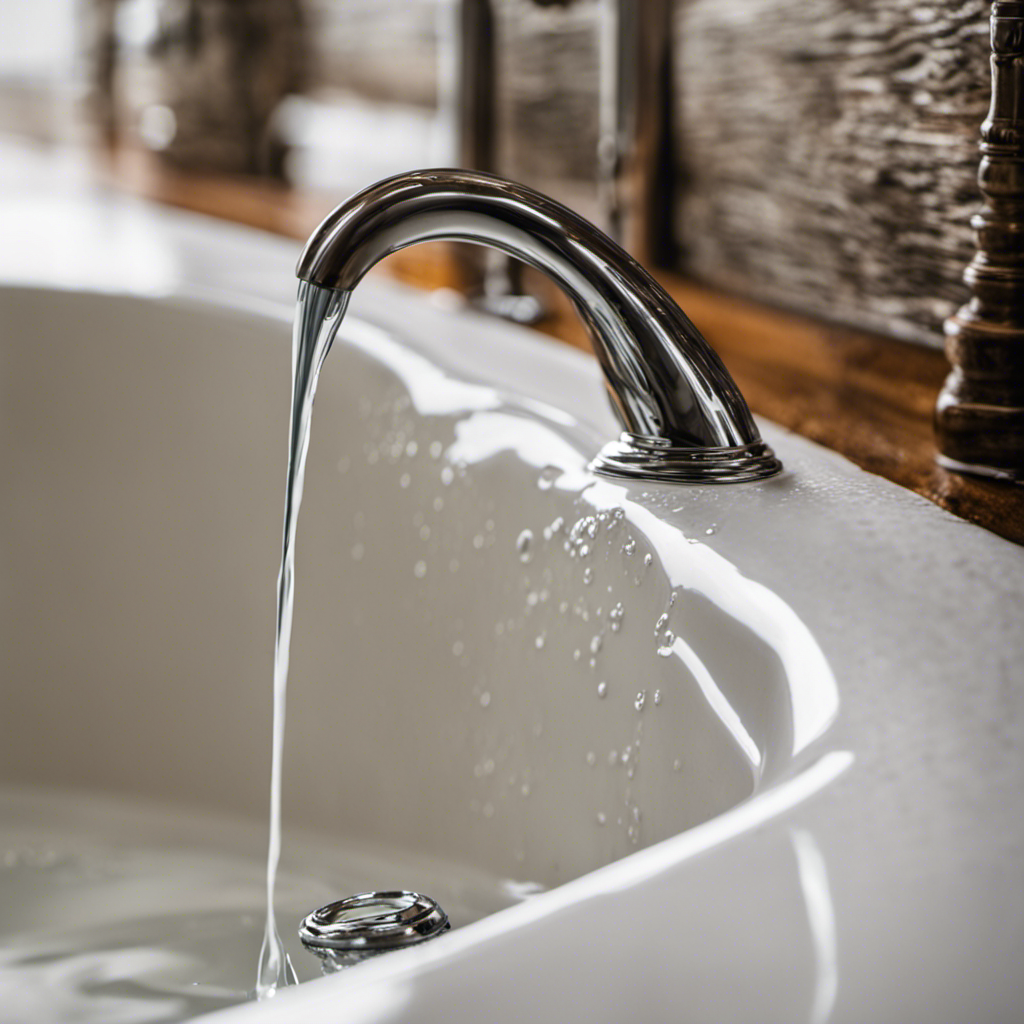
Did you know that a leaking bathtub can waste up to 90 gallons of water per day?
It’s not just a nuisance, but also a significant drain on your resources.
In this article, I will guide you through the step-by-step process of fixing a bathtub leak.
By following these simple instructions and using basic tools, you can save water, money, and prevent further damage to your bathroom.
Let’s get started and put an end to that annoying bathtub leak once and for all.
Key Takeaways
- Assess the damage and identify the source of the leak.
- Gather the necessary tools for the repair.
- Use proper tool selection and maintenance for successful repairs.
- Locate the source of the leak and address any issues promptly.
Assess the Leak
First, you’ll need to assess the leak in your bathtub. Assessing the damage is crucial to determine the severity of the problem and the necessary steps for repair.
Start by examining the area around the leak. Look for signs of water damage, such as discoloration or peeling paint. Check for any cracks or gaps in the bathtub itself, as well as in the surrounding tiles or caulking.
Next, try to identify the source of the leak. Is it coming from the faucet, the drain, or the overflow pipe?
Once you have assessed the damage and pinpointed the location of the leak, you can move on to troubleshooting tips to fix it.
Gather the Necessary Tools
When it comes to tackling repair projects, having the right tools is essential. In order to successfully fix any leaks or malfunctions, it is important to have a set of essential repair tools that will allow you to complete the job efficiently and effectively. Proper tool selection is also crucial, as using the wrong tool can lead to further damage or even injury.
Additionally, organizing your tools in a systematic way can save you time and frustration, ensuring that you can easily locate the necessary tools when you need them.
Essential Repair Tools
You’ll need a few essential repair tools to fix a bathtub leak. One of the most important tools is a wrench, which is used to tighten or loosen nuts and bolts. It’s crucial to have a wrench with adjustable jaws to fit various sizes of nuts.
Another essential tool is a plumber’s tape, also known as Teflon tape, which helps create a watertight seal on threaded pipe connections.
Additionally, a caulking gun and silicone caulk are necessary to seal any gaps or cracks around the edges of the bathtub.
When it comes to tool maintenance, it’s vital to keep your tools clean and dry after each use to prevent rust and corrosion.
Lastly, to avoid common repair mistakes, always read the manufacturer’s instructions carefully and take your time to ensure a proper and long-lasting repair.
Proper Tool Selection
Using the correct tools is crucial for ensuring a successful and long-lasting repair. Not only do you need to have the right tools for the job, but you also need to properly maintain them for optimal performance and safety. Regular tool maintenance is essential to keep your tools in good condition and prevent any accidents or malfunctions. This includes cleaning them after each use, lubricating moving parts, and storing them in a dry and secure place. Additionally, it’s important to follow tool safety guidelines to protect yourself and others. Always wear appropriate safety gear, such as goggles and gloves, and use tools as intended. Never use damaged or faulty tools, as they can lead to injury. By taking care of your tools and using them safely, you can ensure a successful repair and protect yourself from any potential harm.
| Tool Maintenance Tips | Tool Safety Guidelines |
|---|---|
| Clean after use | Wear safety gear |
| Lubricate moving parts | Use tools as intended |
| Store in a dry place | Avoid damaged tools |
| Secure storage | Follow safety guidelines |
Tool Organization Tips
To keep your tools organized and easily accessible, it’s important to establish a designated storage area for them. One of the best places to store your tools is in the garage. A well-organized garage can make finding the right tool for the job a breeze.
Invest in sturdy shelves and cabinets to keep your tools off the floor and within reach. Use hooks and pegboards to hang smaller tools, such as wrenches and screwdrivers.
In addition to garage organization, you can also utilize kitchen storage for smaller tools that you frequently use. Magnetic strips on the inside of cabinet doors are a great way to store knives and other metal tools.
By keeping your tools organized in both the garage and kitchen, you’ll always know where to find them when you need them.
Now, let’s move on to locating the source of the leak.
Locate the Source of the Leak
When trying to locate the source of a bathtub leak, there are a few key points to keep in mind.
First, it’s important to inspect the visible plumbing in and around the bathtub to look for any signs of water damage or leaks.
Next, checking the faucet connections is crucial, as loose or worn-out fittings can often be the cause of leaks.
Lastly, testing the drain pipe is essential to ensure it is functioning properly and not contributing to the leak.
Inspect Visible Plumbing
Check if there’s any visible damage or signs of leakage in the plumbing.
Performing a thorough inspection of the visible plumbing in your bathroom can provide numerous benefits. Not only can it help you identify potential issues early on, but it can also save you from costly repairs down the line.
When inspecting your plumbing, pay close attention to the bathtub area as leaks are commonly found there. Look for any signs of water stains, mold, or mildew around the base of the bathtub or on the walls nearby. Additionally, check for any loose or cracked tiles, as these can be indicators of a hidden leak.
Check Faucet Connections
Make sure you examine the faucet connections in your bathroom for any signs of damage or leaks. Proper faucet maintenance is crucial to prevent water wastage and potential damage to your bathtub plumbing.
A quick inspection of the connections can help you identify any issues before they worsen. Look for any visible leaks, loose connections, or signs of corrosion. If you notice any problems, it’s important to address them promptly to avoid costly repairs down the line.
Regularly checking the faucet connections is a simple yet effective way to ensure the proper functioning of your bathtub plumbing. By taking proactive measures, you can maintain the integrity of your plumbing system and enjoy a leak-free bathing experience.
Test Drain Pipe
Ensure you inspect the drain pipe in your bathroom for any signs of clogging or blockage. A clogged drain pipe can lead to leaks and water damage if not addressed promptly. If you notice any slow drainage or unpleasant odors, it’s crucial to take action.
Depending on the severity of the issue, you may need to consider drain pipe repair or even drain pipe replacement. Repairing a drain pipe involves identifying the cause of the clog and removing it using tools like a plunger or drain snake. However, if the pipe is damaged beyond repair or has significant corrosion, it might be necessary to replace the entire pipe.
In such cases, it’s recommended to seek professional assistance to ensure a proper and long-lasting solution.
Repair Small Cracks or Holes
To patch up any small cracks or holes in your bathtub, follow these steps:
- Clean the damaged area thoroughly to remove any dirt or debris.
- Mix the epoxy putty according to the manufacturer’s instructions.
- Apply the putty to the cracks or holes, making sure to smooth it out evenly.
- Allow the putty to dry completely before sanding it down to create a smooth surface.
- Once the putty is sanded, apply a layer of fiberglass resin to reinforce the repair.
- This will ensure a strong and durable seal.
- By repairing fiberglass cracks and sealing the bathtub surface, you can prevent any further leaks or damage.
Now, let’s move on to the next step and replace any damaged caulking or sealant.
Replace Damaged Caulking or Sealant
Now that you’ve learned how to repair small cracks or holes in your bathtub, let’s move on to the next step: replacing damaged caulking or sealant.
This is an important part of bathtub leak maintenance and water damage prevention.
Over time, caulking can become worn out or damaged, leading to leaks and potential water damage. To replace the caulking, start by removing the old caulking using a scraper or putty knife. Make sure to clean the area thoroughly and remove any residue.
Next, apply a new bead of silicone or bathtub sealant along the joint between the bathtub and the wall. Use a caulking gun for a precise application. Smooth out the caulking with your finger or a caulk smoothing tool to ensure a tight seal.
Remember to regularly check and maintain the caulking in your bathtub to prevent future leaks and water damage.
Fix Leaking Pipes or Fittings
If your pipes or fittings are leaking, it’s important to address the issue promptly to prevent further water damage. Fixing plumbing leaks is a crucial task that requires attention to detail and knowledge of common causes of bathtub leaks. To assist you in understanding the potential causes, I have compiled a table below:
| Common Causes of Bathtub Leaks | ||
|---|---|---|
| 1. Loose fittings | 2. Corroded pipes | 3. Damaged seals |
| 4. Cracked pipes | 5. Faulty plumbing installation | 6. High water pressure |
| 7. Aging pipes | 8. Improper pipe connections | 9. Structural damage |
| 10. Excessive wear and tear | 11. Clogged drains | 12. Incorrect pipe size |
Test and Ensure the Leak Is Resolved
Once you have addressed the cause of the leak, make sure to test and confirm that the issue has been resolved. It is crucial to ensure that the bathtub leak is fixed properly to prevent any further damage.
To verify the results, there are several testing methods you can use:
-
Visual inspection: Look for any signs of water leakage around the bathtub, such as dampness or discoloration.
-
Water test: Fill the bathtub with water and let it sit for a while to see if any leaks occur.
-
Pressure test: Use a pressure gauge to check if the water pressure remains stable after fixing the leak.
-
Dye test: Add a few drops of food coloring into the bathtub and see if the colored water leaks out.
Conclusion
After following these steps to fix a bathtub leak, I’m relieved to say that the water is no longer escaping.
With the right tools and a little bit of patience, I was able to locate and repair the source of the leak.
The feeling of accomplishment is as refreshing as a cool, soothing bath after a long day.
Now, I can relax knowing that my bathtub is leak-free and ready for me to enjoy.
Mateo’s flair for writing is matched only by his keen eye for design. As an interior designer turned writer, Mateo brings a unique perspective. He blends aesthetics with functionality in every piece he pens, providing readers with beautifully crafted content that’s also supremely useful.
Mateo loves exploring the latest bathroom tech trends and is our expert on smart toilets. When he’s not writing or designing, Mateo can be found sketching ideas for his next big project at local coffee shops.
Bathtub
Can You Manually Add Water to a Toilet Tank

Have you ever experienced the frustration of having a low water level in your toilet tank? We sympathize with the irritation and inconvenience it may bring.
But fear not, for we have the solution! In this article, we will show you how to manually add water to your toilet tank, ensuring a proper water level.
Follow our step-by-step instructions and maintain mastery over your plumbing system.
Let’s dive in and take control of the situation!
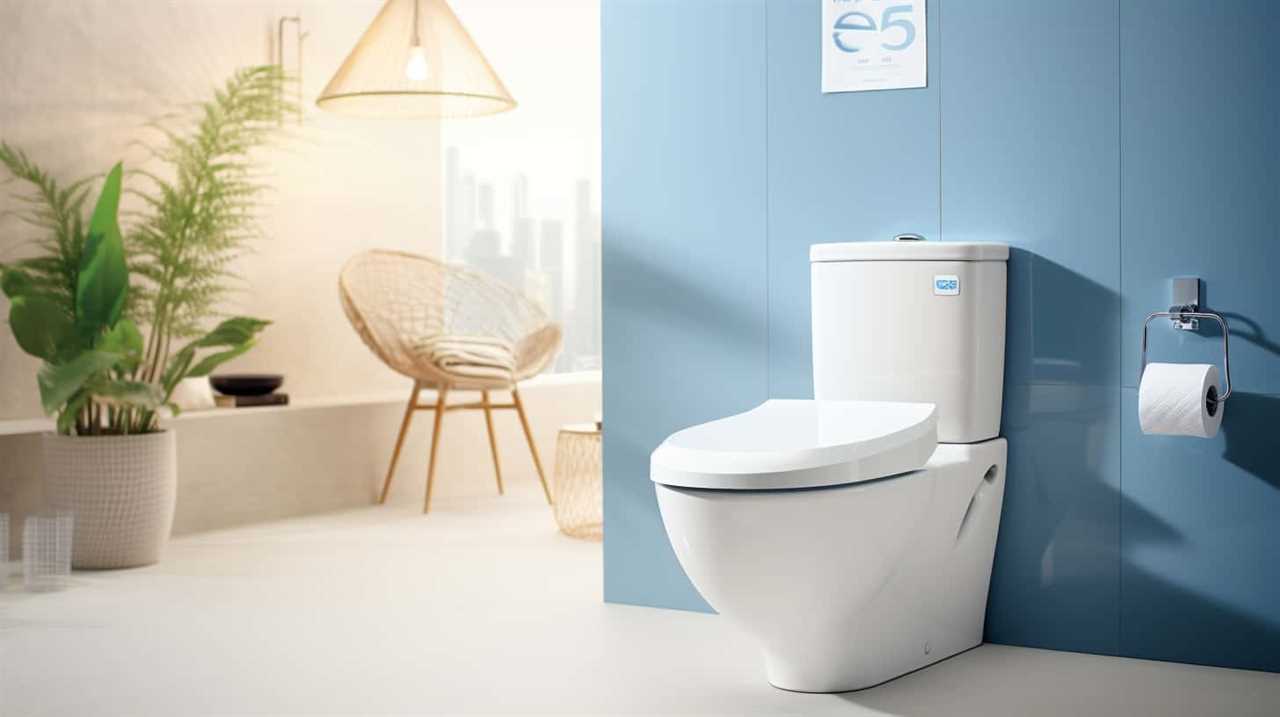
Key Takeaways
- Low water level in a toilet tank can lead to clogs and unpleasant odors.
- Adding water manually to the tank can help maintain the proper water level.
- Regularly checking for leaks, damage, and adjusting the fill valve can prevent low water levels.
- Troubleshooting common issues like tank leaks and faulty parts can help resolve water level problems.
Reasons for Low Water Level
One of the most common reasons for a low water level in our toilet tank is a faulty fill valve. A faulty fill valve prevents the tank from filling up to its proper level, which can lead to various issues such as toilet clogs.
It’s important to maintain the proper water level in the toilet tank as it ensures the effective flushing of waste and prevents clogs from occurring. When the water level is too low, it may not provide enough force to push the waste through the drain, resulting in a clog. Additionally, a low water level can also cause incomplete flushing, leaving behind residue and causing unpleasant odors.
To address this issue, we’ll need certain tools and materials.
Tools and Materials Needed
To manually add water to a toilet tank, we’ll need a few essential tools and materials. Here is a list of what you’ll need:
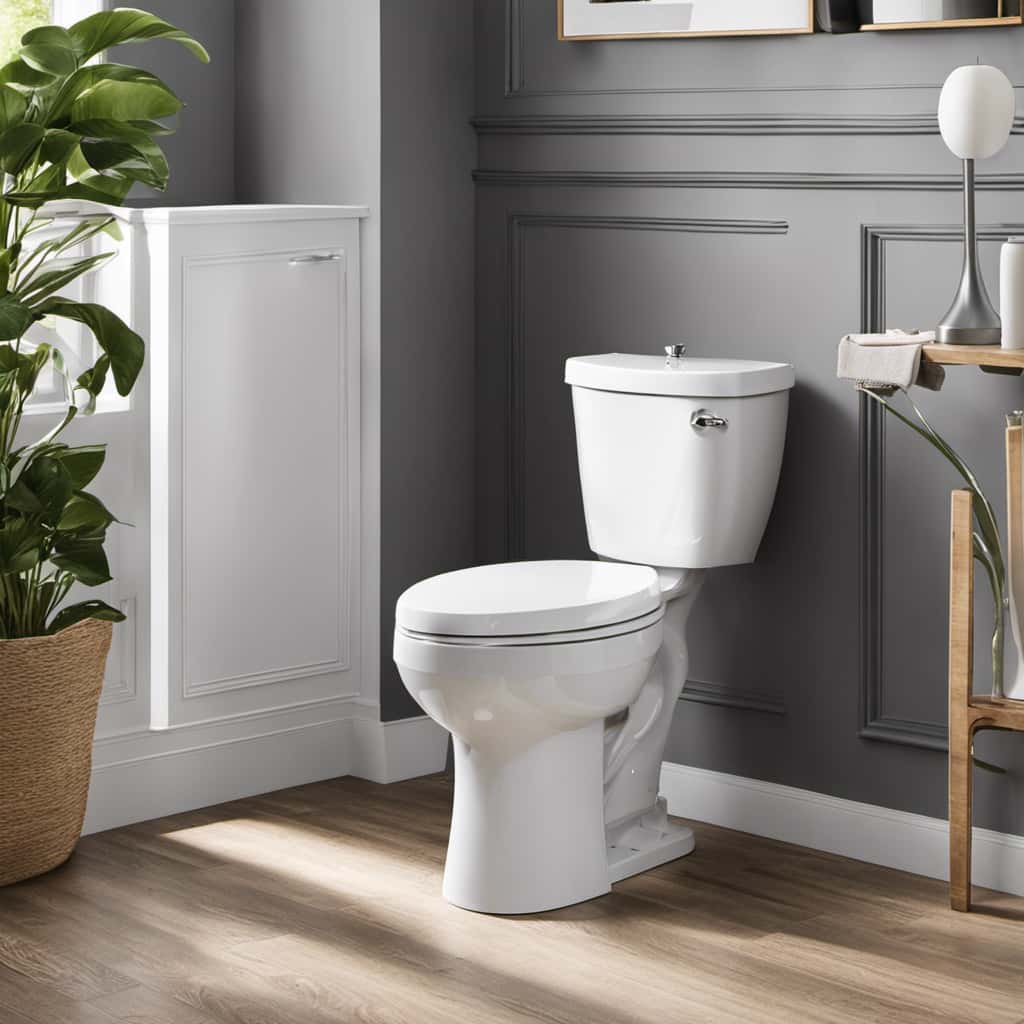
- Adjustable wrench: This tool is necessary for loosening and tightening the water supply line nut that connects the toilet tank to the water source.
- Bucket or container: You’ll need a container to hold the water that you’ll be adding to the toilet tank. A bucket or any other suitable container will work.
- Water: Fill the container with clean water to add to the toilet tank. Ensure that the water is free from contaminants to maintain the cleanliness of the tank.
- Towel or rag: It’s always a good idea to have a towel or rag handy to wipe up any spills or leaks that may occur during the process.
Step-by-Step Instructions
Now, let’s dive into the step-by-step instructions for manually adding water to a toilet tank.
Toilet tank maintenance is essential for the proper functioning of your bathroom fixture, especially if you have water-saving devices installed.
To manually add water to your toilet tank, follow these instructions carefully:
- Locate the water shut-off valve behind the toilet and turn it clockwise to shut off the water supply.
- Lift the toilet tank lid and place it aside in a safe spot.
- Inspect the tank for any visible leaks or damage.
- Locate the fill valve, which is connected to the water supply line, and locate the float. The float is a small plastic or metal device that controls the water level.
- Gently lift the float to the highest position, and hold it there.
- Slowly turn on the water shut-off valve counterclockwise to allow water to enter the tank.
- Keep an eye on the water level and release the float when the tank is filled to the desired level.
- Once the tank is filled, carefully place the tank lid back on and ensure it’s secure.
Following these step-by-step instructions will help you manually add water to your toilet tank effectively. Regular toilet tank maintenance is crucial to ensure the optimal performance of your water-saving devices.
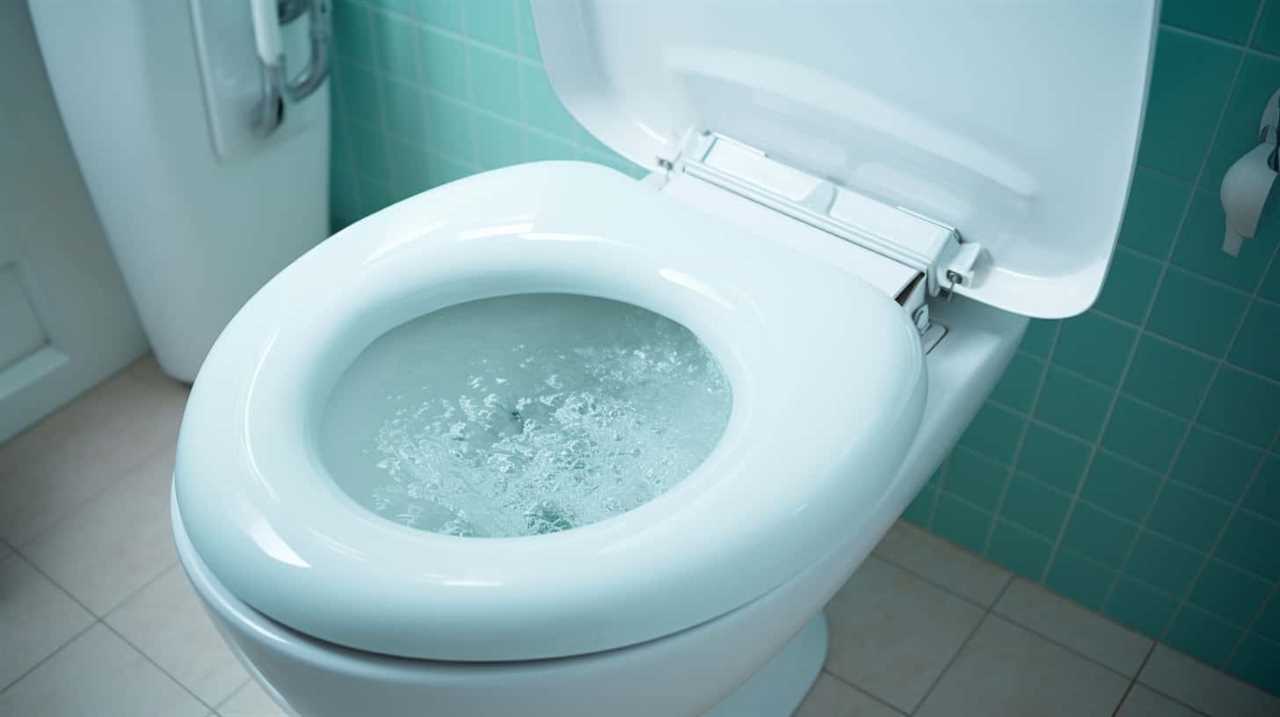
Tips for Maintaining Proper Water Level
To maintain the proper water level in your toilet tank, we recommend regularly checking for any leaks or damage and adjusting the fill valve as needed. Here are some tips for maintaining the proper water level:
- Importance of regular toilet maintenance: Regularly checking for leaks or damage can prevent water wastage and potential water damage to your bathroom.
- Benefits of using a water-saving toilet flush system: Upgrading to a water-saving toilet flush system can help reduce water consumption, saving you money on your water bills and contributing to environmental conservation.
- Adjust the fill valve: If you notice that the water level in your toilet tank is too low or too high, adjust the fill valve accordingly. This will ensure that the toilet flushes properly and efficiently.
- Check for leaks: Periodically check for any leaks in the toilet tank or the water supply line. Leaks can cause the water level to drop, leading to a less effective flush and potential water damage.
Troubleshooting Common Issues
When troubleshooting common issues with a toilet tank, we often encounter problems that can be easily resolved with basic maintenance.
Two common issues that can occur are toilet tank leaks and toilet tank float adjustment. Toilet tank leaks can lead to a constant water flow, resulting in wasted water and higher water bills. To fix this issue, it’s important to check the tank for any cracks or damage and replace any faulty parts, such as the flapper or fill valve.
Another common issue is an incorrect toilet tank float adjustment, which can cause the toilet to constantly run or not flush properly. Adjusting the toilet tank float to the correct water level can resolve this issue. It’s important to ensure that the float is properly positioned and not obstructed by any debris or other objects.
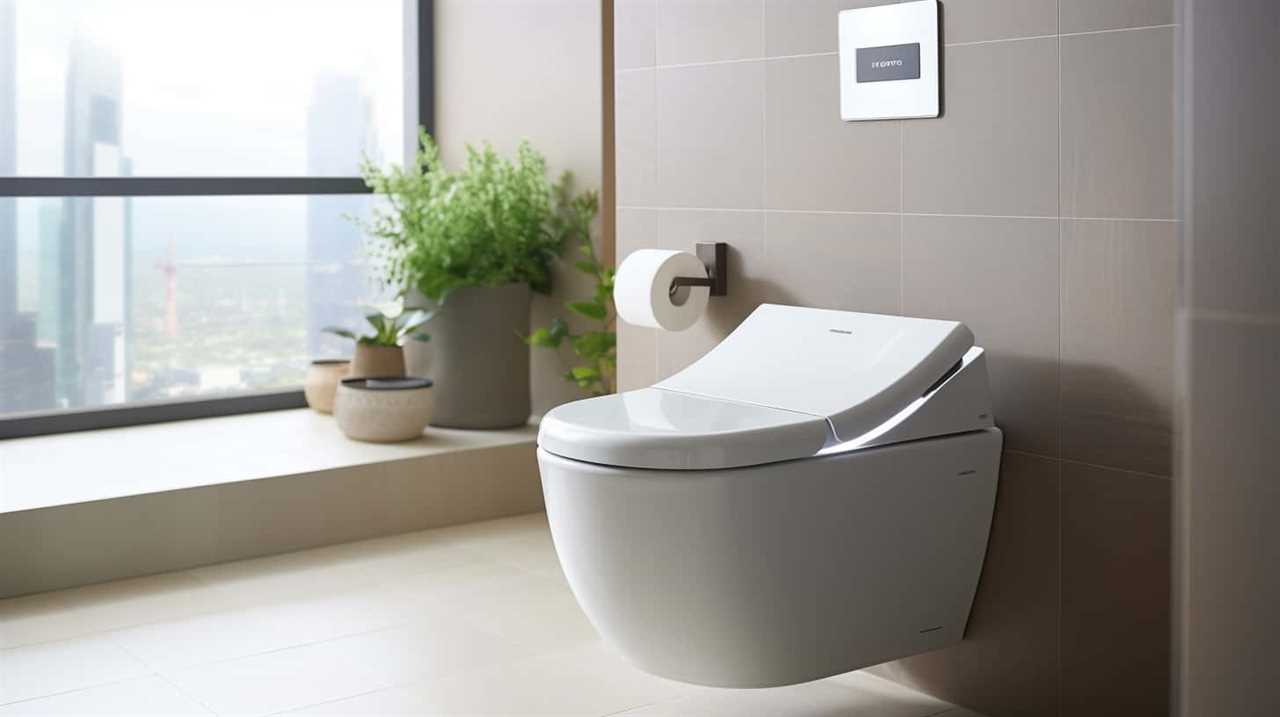
Frequently Asked Questions
Can I Use Any Type of Water to Manually Add to the Toilet Tank?
Yes, we can manually add water to a toilet tank. However, it is important to use clean, potable water to maintain water quality and prevent any potential damage to the tank or plumbing system.
How Often Do I Need to Manually Add Water to the Toilet Tank?
We should regularly check the water level in the toilet tank to ensure proper functioning. Using a measuring cup, we can manually add water as needed, maintaining the optimal level for flushing efficiency.
Is It Safe to Manually Add Water to the Toilet Tank While the Toilet Is in Use?
Yes, we can manually add water to a toilet tank for maintenance and troubleshooting of the water level. However, it is important to ensure the toilet is not in use to prevent any accidents.
Will Manually Adding Water to the Toilet Tank Fix Other Toilet-Related Issues?
Manually adding water to a toilet tank may temporarily fix some toilet-related issues, but it won’t address potential causes that require professional assistance. Troubleshooting and fixing common problems without water addition should be our first approach.
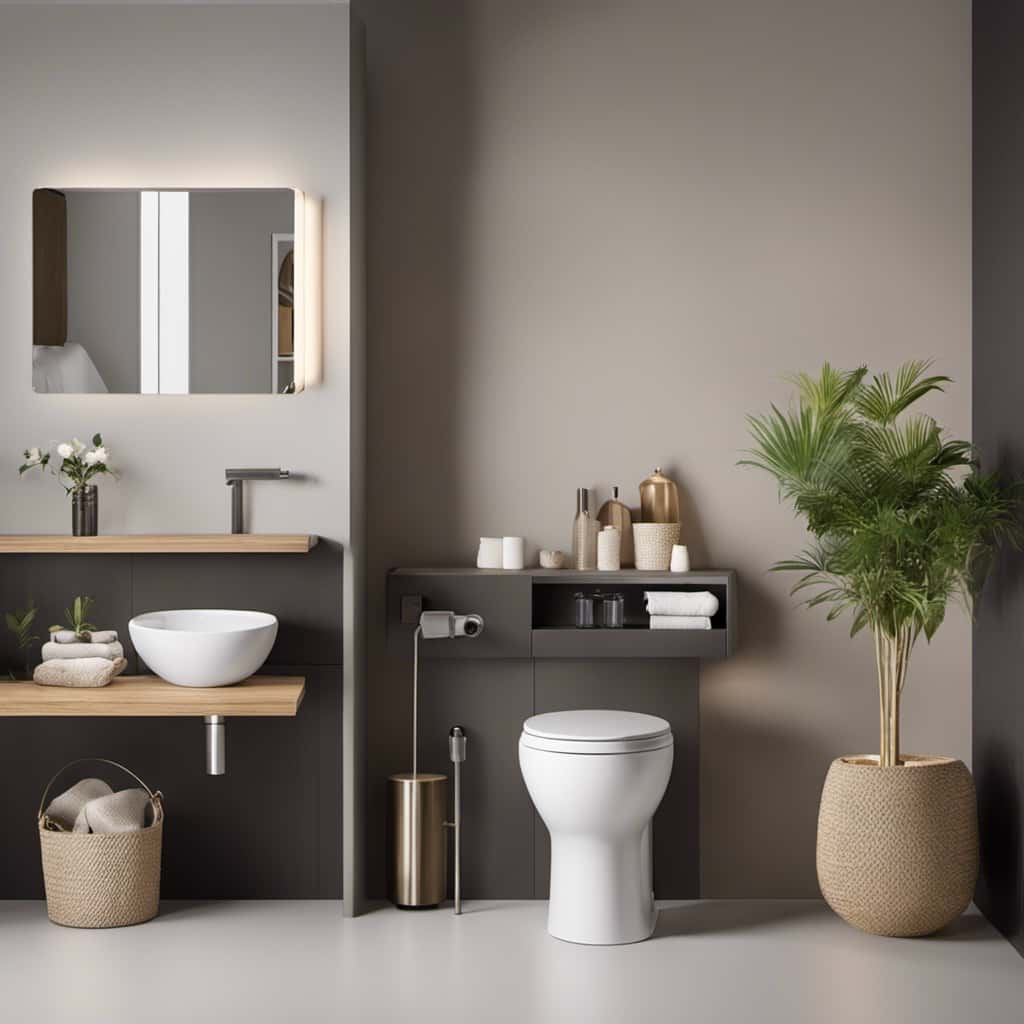
Can I Manually Add Water to the Toilet Tank if My Toilet Is Constantly Running?
Yes, you can manually add water to a toilet tank if it is constantly running. This can help maintain the water level and potentially fix the issue. It is important to identify and address the common causes of a constantly running toilet, as fixing it can save water and prevent damage.
Conclusion
In conclusion, manually adding water to a toilet tank is a simple and straightforward process. By following the step-by-step instructions and using the necessary tools and materials, you can easily maintain a proper water level in your toilet.
Remember to regularly check and adjust the water level to prevent any issues. Just like a well-tuned machine, a well-maintained toilet ensures smooth and efficient operation.
With an impeccable eye for detail and a passion for bathroom-related, Ava leads our editorial team gracefully and precisely.
Under her guidance, Best Modern Toilet has flourished as the go-to resource for modern bathroom enthusiasts. In her free time, you might find Ava exploring antique shops and looking for vintage bathroom fixtures to add to her collection.
Bathtub
Can You Flush Toilet Paper in Puerto Del Carmen

Did you know that more than 80% of tourists in Puerto Del Carmen are curious about whether they can flush toilet paper? Don’t worry, we’re here to reassure you.
In this article, we’ll explore the plumbing infrastructure of Puerto Del Carmen and discuss the benefits of flushing toilet paper.
We’ll also provide tips for proper disposal of other bathroom waste and considerations for travelers with sensitive plumbing systems.
So, let’s dive in and discover everything you need to know about flushing toilet paper in Puerto Del Carmen.
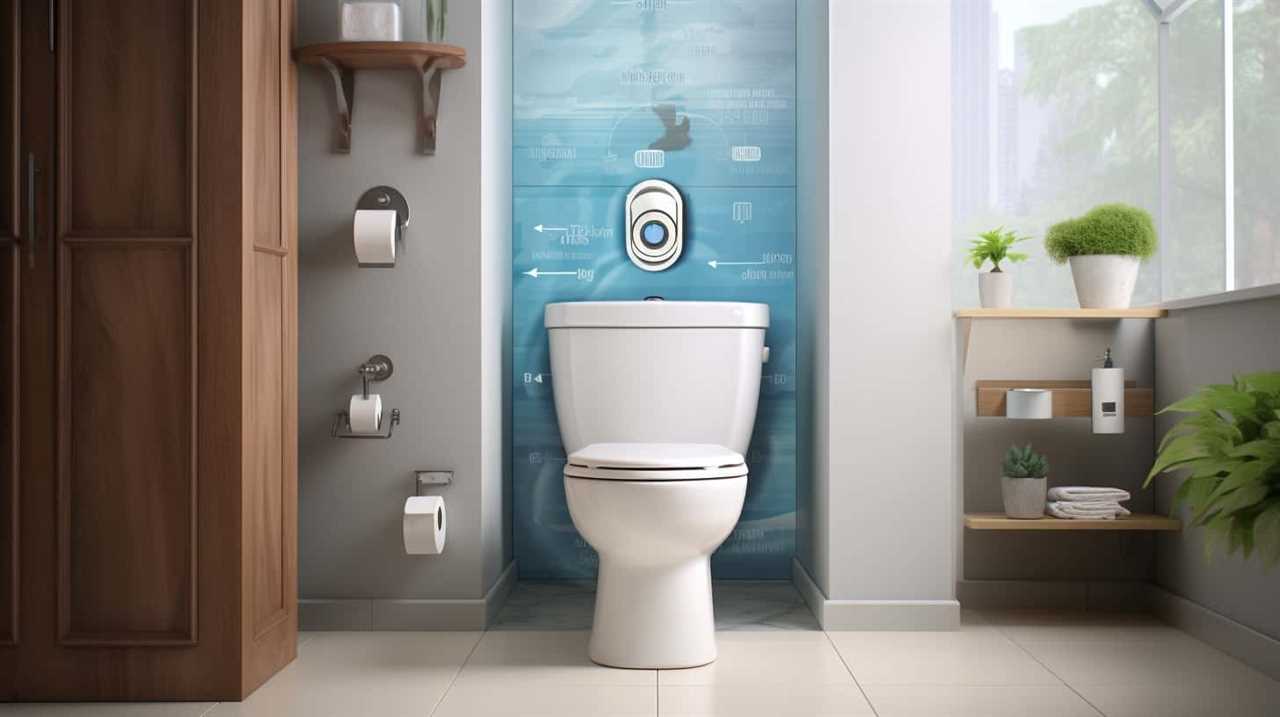
Key Takeaways
- Flushing toilet paper is generally allowed in Puerto Del Carmen.
- The plumbing system is designed to handle toilet paper disposal and is well-maintained.
- Flushing toilet paper saves time and effort compared to separate disposal methods.
- Proper disposal of other bathroom waste such as baby wipes and sanitary napkins is essential to prevent clogs and protect the environment.
Plumbing Infrastructure in Puerto Del Carmen
When it comes to the plumbing infrastructure in Puerto Del Carmen, we’ve found that flushing toilet paper is generally allowed. The water quality in Puerto Del Carmen is exceptional, and the plumbing system is designed to handle the disposal of toilet paper without any issues. The pipes and sewer system are well-maintained, ensuring smooth and efficient waste disposal.
This not only guarantees a hygienic and comfortable experience for residents and visitors but also has a positive environmental impact. By allowing the flushing of toilet paper, Puerto Del Carmen minimizes the need for additional waste management measures and reduces the amount of waste that ends up in landfills.
This responsible approach not only preserves the pristine beauty of the area but also helps to maintain the delicate balance of the ecosystem.
Benefits of Flushing Toilet Paper
Flushing toilet paper in Puerto Del Carmen offers numerous benefits for both residents and the environment. Not only does it contribute to the convenience and hygiene of daily life, but it also has a positive environmental impact. By flushing toilet paper, residents can avoid the hassle of disposing of it in a separate trash bin, saving time and effort. Additionally, it helps maintain a cleaner and more pleasant bathroom environment, reducing the risk of odors and bacteria. From an environmental standpoint, flushing toilet paper eliminates the need for additional waste management processes, reducing the overall carbon footprint. Here is a table summarizing the benefits of flushing toilet paper in Puerto Del Carmen:
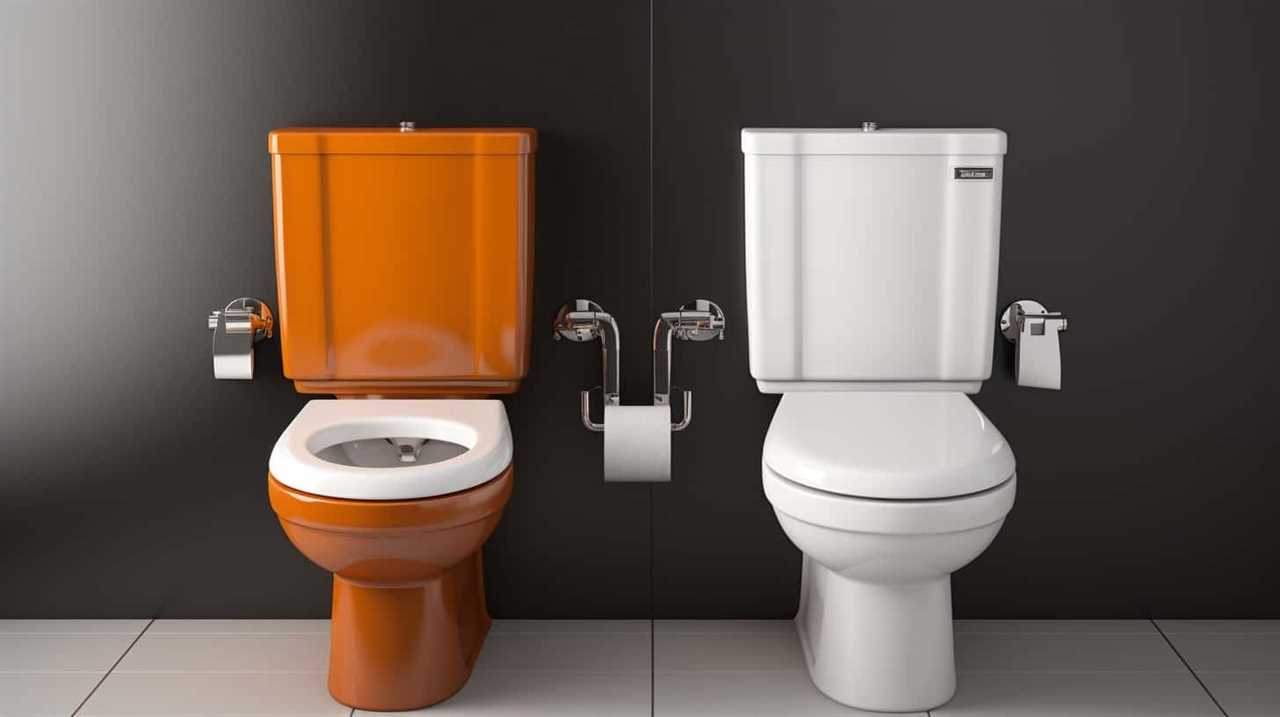
| Benefits |
|---|
| Convenience |
| Hygiene |
| Environmental Impact |
Proper Disposal of Other Bathroom Waste
To ensure proper sanitation and waste management, we must address the appropriate disposal of other bathroom waste in Puerto Del Carmen.
While we’ve discussed the flushing of toilet paper, there are other items that shouldn’t be flushed down the toilet. Proper disposal methods are crucial to prevent clogs and protect the environment.
Items such as baby wipes, sanitary napkins, and cotton swabs should be placed in a waste bin instead of being flushed. These items don’t break down easily and can cause blockages in the sewage system. When flushed, they can also end up in rivers and oceans, contributing to pollution and harming marine life.
Tips for a Smooth Flushing Experience
To ensure a smooth flushing experience and prevent any potential clogs, we can follow a few simple tips:

- Use the right amount of toilet paper: One or two squares should be enough for most tasks. Avoid excessive use to prevent clogging.
- Consider toilet paper alternatives: If you’re looking for eco-friendly bathroom options, consider using bidets or wet wipes specifically designed to be flushed.
- Flush properly: After using the toilet, make sure to hold down the flush lever until all the waste and toilet paper have been completely flushed away. This will help prevent any lingering debris from causing a clog.
- Regular maintenance: Keep your toilet in good condition by performing regular maintenance, such as checking for leaks, cleaning the flush holes, and using a plunger if necessary.
Considerations for Travelers With Sensitive Plumbing Systems
When traveling to Puerto Del Carmen, it’s important for us to consider the sensitivity of our plumbing systems. This is especially true for those of us who are traveling with septic systems or have eco-friendly alternatives in mind.
Septic systems are designed to treat and dispose of wastewater, but they can be easily overwhelmed by excessive toilet paper usage or other non-biodegradable materials.
To prevent any plumbing issues during our trip, it’s advisable to use eco-friendly alternatives such as bidets or wet wipes that are specifically designed to be flushed down the toilet. These alternatives aren’t only gentle on our plumbing systems but also help us reduce our environmental impact.
Frequently Asked Questions
Can I Flush Baby Wipes or Other Non-Flushable Products Down the Toilet in Puerto Del Carmen?
Yes, we can flush toilet paper in Puerto Del Carmen. However, it is important to note that non-flushable products, such as baby wipes, should not be flushed. There are alternative toilet paper options available.

Are Bidets Commonly Found in Bathrooms in Puerto Del Carmen?
Bidets aren’t commonly found in bathrooms in Puerto Del Carmen. Instead, many people use alternative methods for disposing of toilet paper, such as placing it in a bin. This practice helps prevent plumbing issues.
Is It Safe to Drink Tap Water in Puerto Del Carmen?
Yes, it is safe to drink tap water in Puerto Del Carmen. The tap water quality is excellent. However, if you prefer alternatives, bottled water is widely available and many restaurants offer filtered water.
How Often Are the Sewage Systems in Puerto Del Carmen Maintained and Cleaned?
Yes, we maintain and clean the sewage systems in Puerto Del Carmen regularly. Our team ensures the frequency of sewage system maintenance is sufficient to keep them functioning properly. Our cleaning procedures are thorough and effective.
Are There Any Specific Rules or Regulations Regarding Toilet Paper Disposal in Puerto Del Carmen?
Yes, there are specific regulations in Puerto Del Carmen regarding toilet paper disposal. It is important to follow these rules to avoid clogging the sewage system and causing environmental damage by flushing non-flushable products.

Conclusion
So, can you flush toilet paper in Puerto Del Carmen?
The answer is yes! With its modern plumbing infrastructure, you can enjoy the convenience of flushing toilet paper without any worries.
Just remember to dispose of other bathroom waste properly to keep the system running smoothly.
Whether you’re a traveler or a local, these tips will ensure a hassle-free flushing experience.
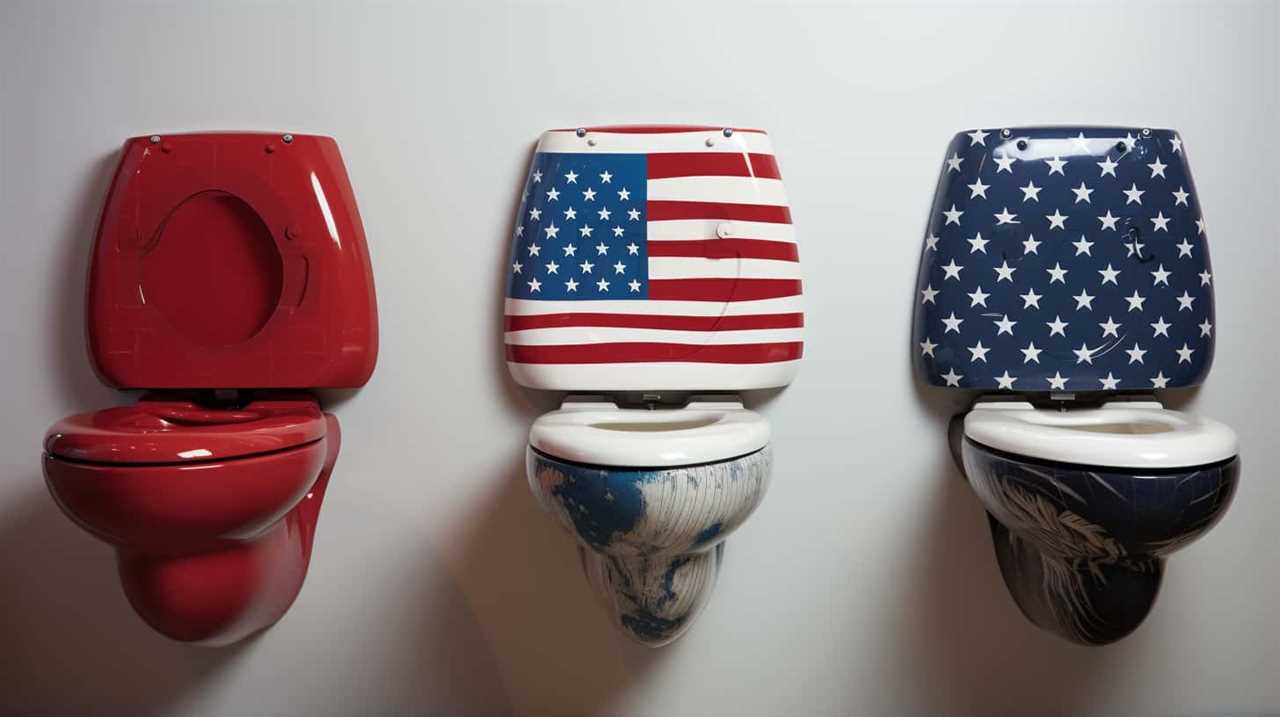
So go ahead, relax, and let the toilet paper disappear with a satisfying whoosh, leaving you with a clean and refreshed feeling.
With an impeccable eye for detail and a passion for bathroom-related, Ava leads our editorial team gracefully and precisely.
Under her guidance, Best Modern Toilet has flourished as the go-to resource for modern bathroom enthusiasts. In her free time, you might find Ava exploring antique shops and looking for vintage bathroom fixtures to add to her collection.
Bathtub
What to Do if You Flush a Large Object Down the Toilet

Have you ever been in a situation where a large object gets flushed down the toilet? It can be a troublesome predicament that needs immediate attention.
Well, fear not! In this article, we will guide you through the steps you need to take to handle this plumbing crisis with ease. From assessing the situation to seeking professional help if needed, we’ve got you covered.
So, let’s dive in and master the art of toilet rescue!
Key Takeaways
- Assess the situation by examining the toilet bowl, checking for signs of leakage, and inspecting the surrounding area for water damage.
- Stop the water flow by locating and turning off the shut-off valve near the base of the toilet to prevent further water from entering the bowl.
- If possible, retrieve the object using a toilet auger or a long-handled tool with a hook, being careful not to push it further into the drain.
- If unable to retrieve the object, consider using a plumbing snake to break up the clog or hook onto the object. If the situation becomes complex, seek professional help from a plumber specializing in toilet repairs and blockage removal.
Assess the Situation
First, we need to assess the situation and determine the severity of the problem after flushing a large object down the toilet. Assessing the damage is crucial in order to take immediate action.

Start by examining the toilet bowl to see if it’s filled with water or overflowing. Take note of any signs of leakage or unusual sounds coming from the pipes. Carefully inspect the surrounding area for any water damage or wet spots on the floor. This will help you understand the extent of the problem and guide your next steps.
Once you have assessed the situation, you can move on to stop the water flow and prevent further damage.
Stop the Water Flow
To stop the water flow after flushing a large object down the toilet, we can use a shut-off valve located near the base of the toilet. This valve is typically a small, round knob that can be turned clockwise to shut off the water supply to the toilet.
By doing this, you can prevent any further water from entering the toilet bowl and potentially causing more damage or flooding. It’s important to act quickly in order to minimize the risk of overflowing and water damage to your bathroom.

Once the water flow has been stopped, you can then proceed to assess the situation and determine the best course of action to remove the object and prevent future plumbing mishaps.
Remember to always exercise caution when dealing with plumbing issues and consider seeking professional help if needed.
Retrieve the Object (If Possible)
After stopping the water flow, we can now focus on retrieving the object from the toilet. It’s important to approach this task with caution to avoid causing further damage to the toilet.
First, put on a pair of rubber gloves to protect your hands.

Use a toilet auger or a long-handled tool with a hook at the end to carefully reach into the toilet bowl and try to grasp the object. Gently maneuver the tool around the object, being mindful not to push it further into the plumbing system.
If the object is within reach, carefully lift it out of the toilet. If you encounter any resistance or are unable to retrieve the object, it’s best to stop and call a professional plumber to avoid causing further toilet damage.
Transitioning to the next section, if retrieving the object manually isn’t possible, you can try using a plumbing snake.
Use a Plumbing Snake
Now, let’s move on to using a plumbing snake to retrieve the object from the toilet. A plumbing snake is a handy tool that can be used to unclog toilets and pipes. It consists of a long, flexible metal cable with a coiled end. Here’s how you can use a plumbing snake to tackle the clog and retrieve the flushed object:
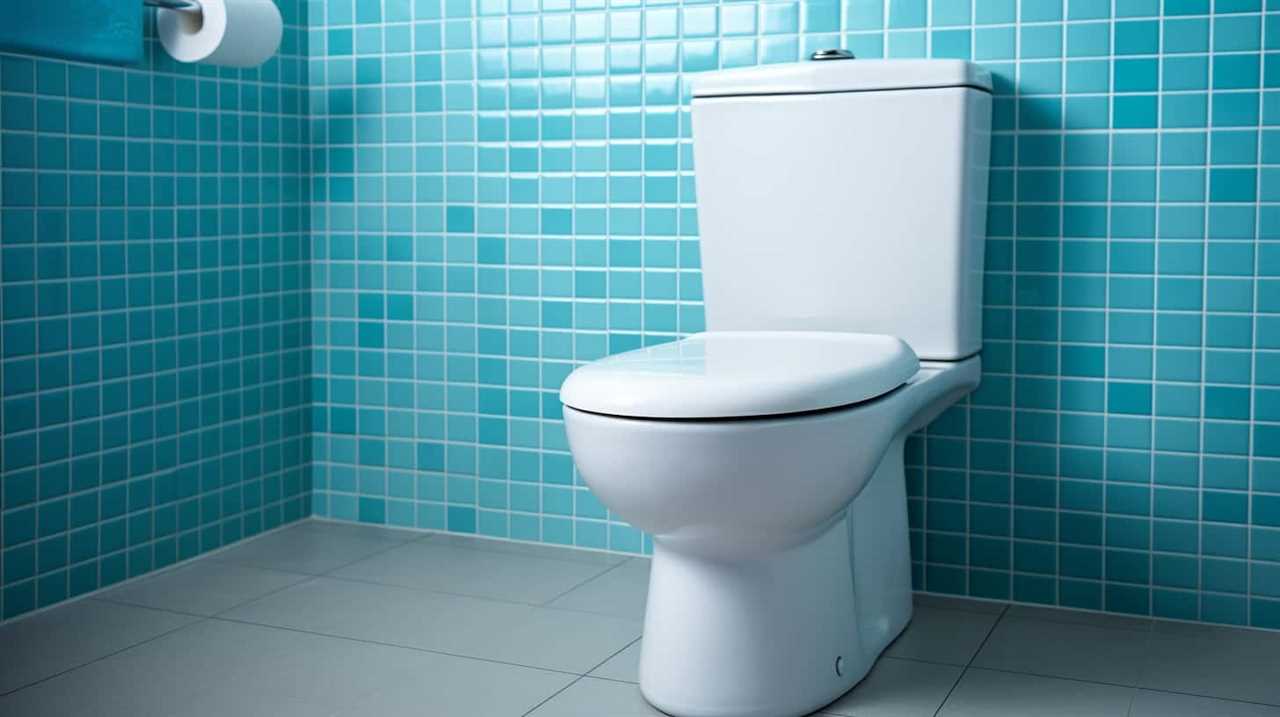
| Step | Instructions |
|---|---|
| 1 | Put on gloves and protective eyewear. |
| 2 | Insert the coiled end of the plumbing snake into the toilet bowl. |
| 3 | Slowly rotate the handle of the snake clockwise to feed it into the drain. |
| 4 | Continue pushing the snake further into the drain until you feel resistance. |
| 5 | Rotate the handle counterclockwise to break up the clog or hook onto the object. |
| 6 | Gently pull the snake back out, taking care not to damage the toilet bowl. |
| 7 | Dispose of the flushed object properly and flush the toilet to ensure it is unclogged. |
Using a plumbing snake is an effective DIY plumbing method to retrieve objects and unclog toilets. Remember to follow these steps carefully to avoid causing further damage.
Seek Professional Help if Necessary
If the object can’t be retrieved using a plumbing snake, we may need to seek professional help. In such cases, it’s advisable to contact a plumber who specializes in toilet repairs and blockage removal. Professional plumbers have the necessary tools, expertise, and experience to handle more complex situations. They can utilize advanced techniques like hydro jetting or drain cameras to locate and remove the object safely.
Seeking professional help ensures that the issue is resolved efficiently and effectively, minimizing any further damage to the plumbing system. Additionally, it’s important to learn from the experience and take steps to prevent future accidents. This includes being mindful of what gets flushed down the toilet and considering the use of drain screens or toilet locks to avoid similar situations in the future.
Frequently Asked Questions
Can I Use a Plunger to Try and Retrieve the Object?
Yes, we can try using a plunger to retrieve the object, but if it doesn’t work, we should consider calling a professional plumber or exploring alternative methods to safely remove the object.
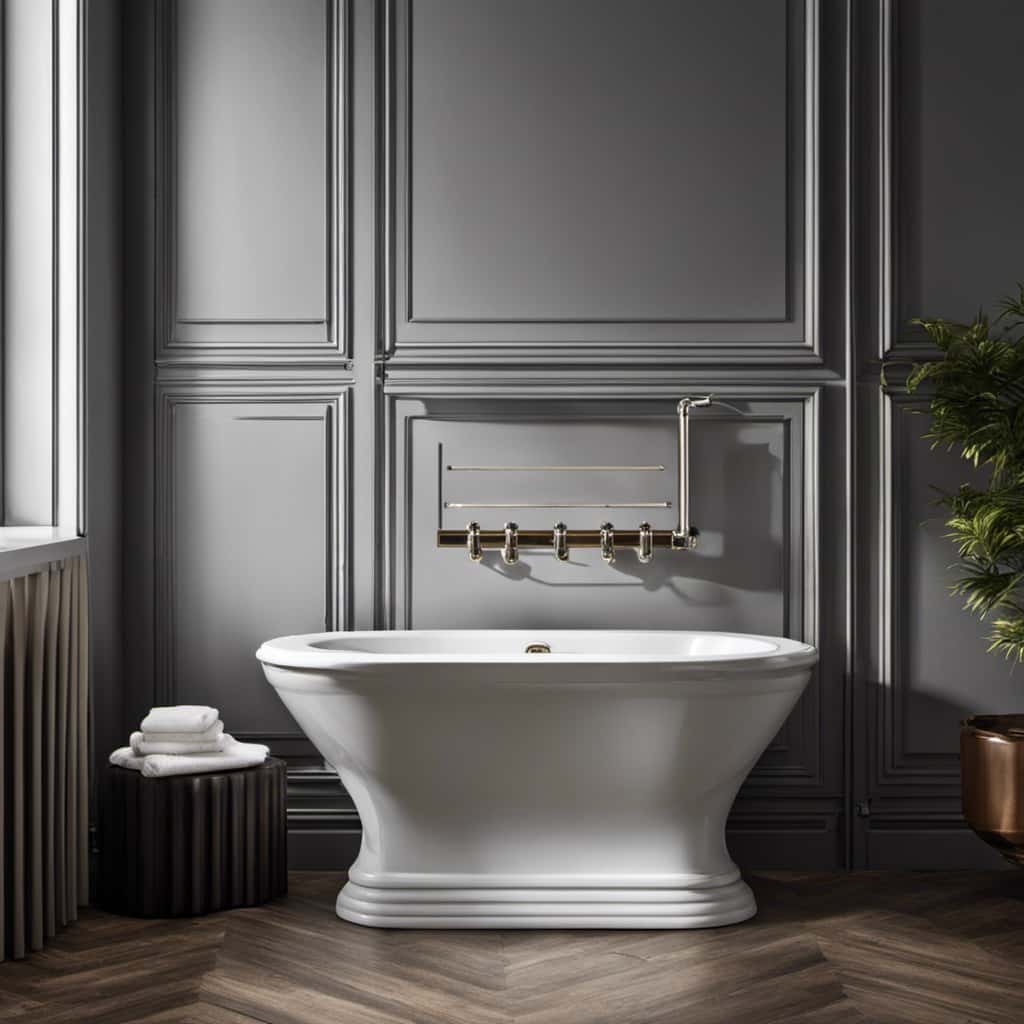
What Are Some Signs That the Object May Have Caused a Blockage in the Plumbing System?
If you notice slow draining, gurgling sounds, or water backing up in other fixtures, these are signs that a large object may have caused a blockage in the plumbing system. To prevent this, be mindful of what you flush and consider using a toilet lock.
Can I Use Chemical Drain Cleaners to Dissolve the Object?
We don’t recommend using chemical drain cleaners to dissolve the object. There are alternative methods, such as using a plunger or a plumbing snake, that are more effective and won’t cause further damage. If these methods don’t work, it’s best to seek professional assistance.
Are There Any Potential Dangers or Risks Associated With Using a Plumbing Snake?
When using a plumbing snake, there are potential risks if not used properly. It is important to follow the proper usage instructions to avoid damaging the pipes or causing further clogs.
Will My Homeowner’s Insurance Cover the Cost of a Professional Plumber if Needed?
Yes, homeowner’s insurance may cover the cost of a professional plumber if needed. However, it’s important to consider DIY methods first to avoid potential risks and dangers.
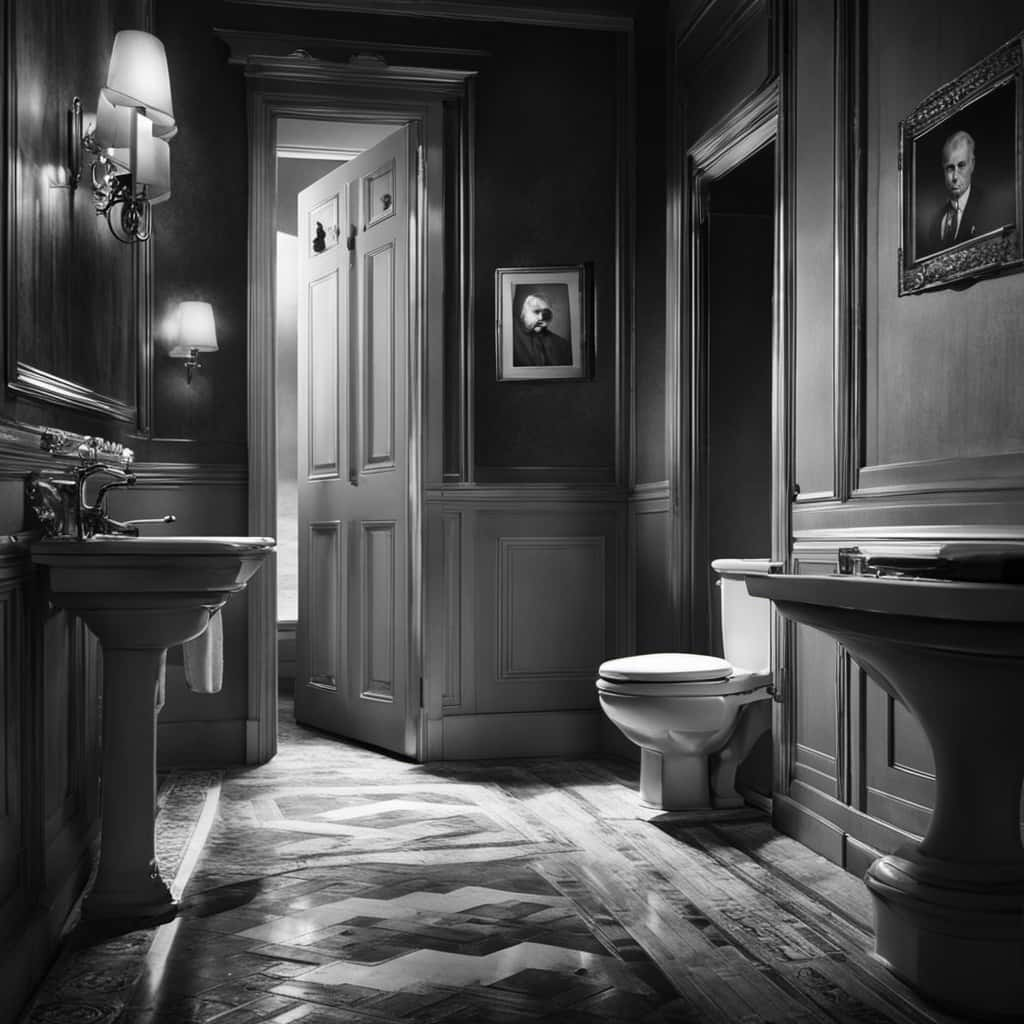
Conclusion
In conclusion, if you find yourself in the unfortunate situation of flushing a large object down the toilet, it’s important to assess the situation calmly and act quickly.
Stop the water flow, try to retrieve the object if possible, and use a plumbing snake if needed. Remember, seeking professional help may be necessary to resolve the issue completely.
Don’t let this mishap send you down the drain like a ship without a captain – take control and tackle the problem head-on.
With an impeccable eye for detail and a passion for bathroom-related, Ava leads our editorial team gracefully and precisely.
Under her guidance, Best Modern Toilet has flourished as the go-to resource for modern bathroom enthusiasts. In her free time, you might find Ava exploring antique shops and looking for vintage bathroom fixtures to add to her collection.
-

 Reviews3 months ago
Reviews3 months agoBest Toilet Air Freshener: Top 10 Picks for a Fresh-Smelling Bathroom [2024]
-

 FAQ - Advanced Bathroom Queries2 months ago
FAQ - Advanced Bathroom Queries2 months agoWhich Countries Use Bidets the Most
-

 Reviews3 months ago
Reviews3 months agoBest Waterless Toilets: Top Options for Eco-Friendly Bathrooms [2024]
-

 Buying Guides3 months ago
Buying Guides3 months agoWhat to Do When You Accidentally Flushed Something Down the Toilet
-

 Reviews1 week ago
Reviews1 week agoLDian Smart Toilet Review [2024]
-

 Reviews3 months ago
Reviews3 months agoBest Toilet Enzyme Cleaners for Optimal Odor Control [2024]
-

 Reviews1 month ago
Reviews1 month agoKohler Innate Smart Toilet Review [2024]
-

 Reviews1 month ago
Reviews1 month agoKohler NUMI 2.0 Smart Toilet Review [2024]






















